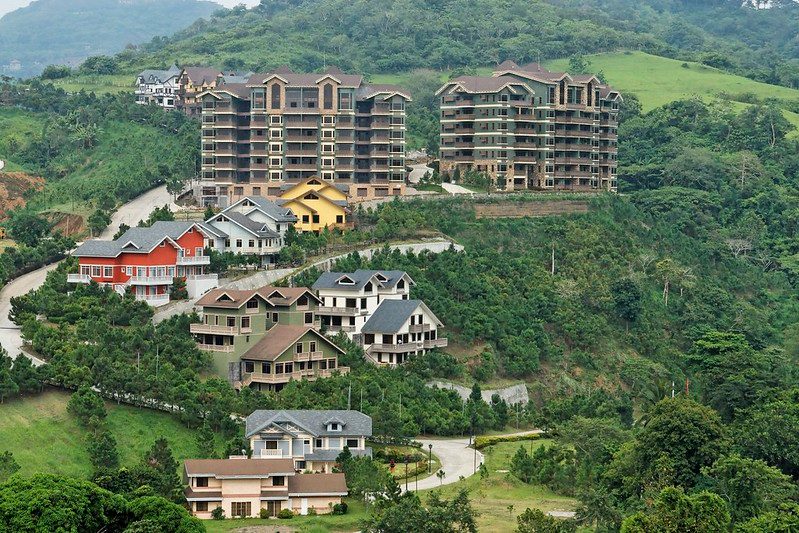BLOGS
Real Estate Diversification: Five Principles to Remember
People who are into real estate investment must have heard about diversification. In fact, anyone who is investing in any asset class is most likely familiar with the term. It is one of the things that financial professionals have constantly been preaching about when it comes to managing a customer’s investment portfolio.
In this unstable economic situation, the proper diversification of different asset classes is the key to managing the risks and keeping one’s hard-earned money safe.

When it comes to the real estate market, diversification of an investor’s physical assets will help in battling the risks that come with unprecedented circumstances like the COVID-19 pandemic that has plagued the world for more than two years now.
Real estate, either commercial real estate or residential real estate, is known for its fast appreciation value and stability in times of crisis. Although, all asset classes are not entirely risk-free. Real estate diversification is an important step to protect one’s investments and keep that direct real estate cash flow coming.
Explaining Real Estate Diversification
Simply put, diversifying one’s real estate portfolio is all about managing the risk exposure of an investor. This means that the total investment will be spread out among a range of asset options so that if one plummets in value, there are still other assets that the investor can earn from.
In the investment world, there should be a perfect balance of protection and risk-taking. An investor can’t always bet everything on one thing; there should be other options in case the first one doesn’t work out.
This can be achieved by having a diverse portfolio of real estate investments.

Reasons to Diversify a Real Estate Portfolio
Nothing is constant, especially in investments. Through the years, the world has seen how the stock market’s volatility has made it seem like a roller coaster ride. Even with low-risk funds, what investors thought was an investment that would grow steadily over time can disappear into thin air all of a sudden.
With real estate, there are other unique reasons why an investor must consider real estate diversification. Aside from the global market situation, there are other phenomena that can account for an investor’s major losses. Some of these are acts of God, such as typhoons, massive flooding, or destructive earthquake.
A key part of any investment strategy is asset diversification. By investing in a variety of asset classes, investors can help to protect themselves from life’s uncertainties. If one asset class is knocked down by a single blow, the other asset classes can act as a cushion and help to offset the losses.
This diversification strategy can be particularly important for real estate investors. Real estate markets are notoriously volatile, and a well-diversified portfolio can help to smooth out the ups and downs.
Investors who diversify their real estate holdings across different asset classes can help to protect themselves from the vagaries of the market and build a more stable portfolio.
Five Principles in Real Estate Diversification
Getting started with real estate diversification? Here are five principles to remember to begin protecting those real estate investments as early as possible:
- Location, location, location.
- A wide range of property types.
- Property type is different from a property class.
- Strategy matters.
- Give REITs a try.
1. Location, location, location.
Someone who is familiar with real estate investments would know how much a location matters in this industry. The property value and its saleability is largely dependent on the location. Location is a huge deal in the real estate world.
But again, nothing is constant in this world. A location that is desirable in the present would not be that way forever. It can continue to increase in value or be surpassed by a more trendy location.
In the Philippines, Bonifacio Global City (BGC) is currently the hottest business hub and one of the most desirable locations in the country’s real estate market. While it may stay this way for years or decades, another business hub might pop up and replace its ranking in the future—just like how BGC surpassed the ranking of the other business districts in the country’s capital.

This is why it’s important to put money into other new developments in the area, like those in Pasay or Marikina, which are currently underway. The main rule is that an investor shouldn’t put all of their money in one place, no matter how nice it is. In this case, you shouldn’t put all of your money in one place.
After all, life is uncertain. Something drastic might happen anytime and instantly turn things upside down.
2. A wide range of property types.
Another thing about real estate is that there is a wide range of property types that investors can choose from. Each of these property types serves different markets, which makes real estate such an exciting investment opportunity. May it be residential, industrial, or commercial properties, investors have plenty of choices to choose from.

One example is a trend that emerged in the real estate market during the pandemic. While office spaces suffered big time because of the lockdowns all over the world, residential properties saw an uptake, especially with the demand for vacation homes. Many families decided to purchase a second home away from their primary residence in cramped urban spaces.
Despite the crisis, there is always a new market trend that will need service from the real estate sector. When it comes to investors, it pays to have a diversified portfolio among different property types.
3. Property type is different from a property class.
Aside from the wide range of property types that real estate has, investments can be further segmented into different property classes. What does property class mean?
Basically, property class refers to the target market of a real estate development. This ranges from affordable to luxury properties. For example, when it comes to residential properties, there are house and lot, apartments, and condominiums that differentiate each other among various consumer segments. To elaborate, here are a few examples:
Luxury
There are several luxury real estate developments in the Philippines that cater to affluent clients. One of the top developers in this segment is Brittany Corporation which offers a wide range of property types in the country’s prime locations—luxury house and lot, luxury condos, and luxury lots.
These luxury homes feature world-class designs and state-of-the-art amenities to provide a resort-like experience to their residents every day.
Upscale
Upscale real estate also caters to the high-end market who want to experience convenience and comfort in their homes. Although, it is a little notch down luxury properties when it comes to extravagance and sophistication.
Mid-Income
For young professionals living in the metro, properties for mid-income earners are the perfect fit. These properties are usually located in bustling areas near offices and commercial establishments to provide convenience to urban workers. As for the space and amenities, these properties are just the right amount to sustain the lifestyle of its target market.
Affordable
In the Philippines, there is a government-controlled fund agency called PAG-IBIG that offers house financing for aspiring homeowners in the low-income segment. Properties in this price range mean bungalows, townhouses, single-detached homes, or undeveloped lots without the amenities usually found with the properties in higher segments.
4. Strategy matters.
On top of deciding where to put the investments, it is also good to have a good strategy when investing in real estate. The concept of diversifying one’s investment portfolio is not only about where to invest but also how to handle the investments. This can mean buying and selling, renting, renting-to-own, or house flipping.
To incorporate real estate diversification means a mix-and-match of different strategies. For an investor with multiple assets, there can be a property to be rented out while the other will be put up for selling. Some also decide to buy and hold properties until they appreciate them. The bottom line is, that it is best not to stick to only one strategy. Diversify.
What is house flipping?
Flipping (wholesale real estate investing) means a form of real estate investment technique in which an investor purchases a property to resell for a profit. Flipping real estate properties is a great way to make money in the real estate market. You can get a good return on your money if you buy a property and then sell it for a profit. When you flip real estate, there are a few things to keep in mind.
First, you have to find a property that is a good deal. You can accomplish this by keeping an eye on the property market and looking for homes being marketed for less than they are worth. Once you find a good deal, you need to move quickly to close on the property and then start fixing it up.
After you’ve made all the necessary repairs, you can list the property for sale and hopefully make a nice profit. Flipping real estate can be a great way to make money in the real estate market, but it takes some time, knowledge, and effort to be successful.
Suggested Read: Flipping High-End Properties: What To Know
Suggested Read: Updating Your Investment Portfolio
5. Give REITs a try.
Investing in a Real Estate Investment Trust (REIT) is another good diversifier. It is also much easier because it will not involve owning and managing another physical asset. It acts like a mutual fund that is managed by professionals that are bought, sold, and traded through real estate brokers.
REITs offer investors a unique opportunity to diversify their portfolios without having to put in a lot of work. REITs are asset classes that allow investors to earn income passively from owning and managing real estate property. By investing in REITs, investors can get exposure to a wide range of asset classes, including residential and commercial property, while also earning income from the rent they collect.
While there are some risks associated with investing in REITs, they can be easily managed through a broker. Say, an investor can choose to invest in a REIT that focuses on a specific asset class, such as residential property. This way, the investor can diversify their portfolio and minimize the risk of losing money.
For an easy way to diversify one’s portfolio, giving REITs a try can help investors without doing much work. This can act as a passive income they can easily manage through their brokers.
The Best Real Estate Investment: Your Home
Making sure to have a diversified real estate portfolio is crucial for investors. Having alternative investments is not just for financial stability but also for peace of mind. It is a step towards the life of security that people crave to experience.
When it comes to real estate, the best investment a person can spend on is their home. A place where they can live the lifestyle they work hard for; a place to witness the family’s important milestones; a convenient and comfortable space where they can be their best selves—this is what luxury living is all about.
Luxury living is not just about having a nice home; it’s about having a space that meets your every need and helps you live your best life. When you have a place that ticks all those boxes, it’s easy to see why it’s worth the investment. After all, your home is more than just an asset; it’s your sanctuary, your retreat from the outside world.
It should be where you can be yourself, surrounded by the people and things you love. That’s what luxury living is all about. And when you have that, you have something truly special.

Find the best luxury real estate properties with Brittany Corporation! Check out their extensive portfolio of luxury homes in Tagaytay, Santa Rosa, Alabang, and Sucat.

















